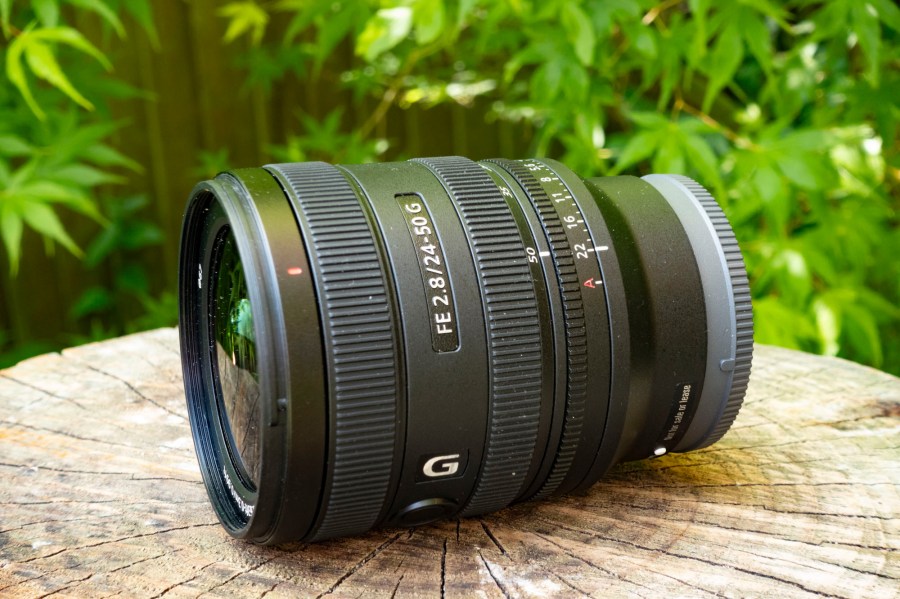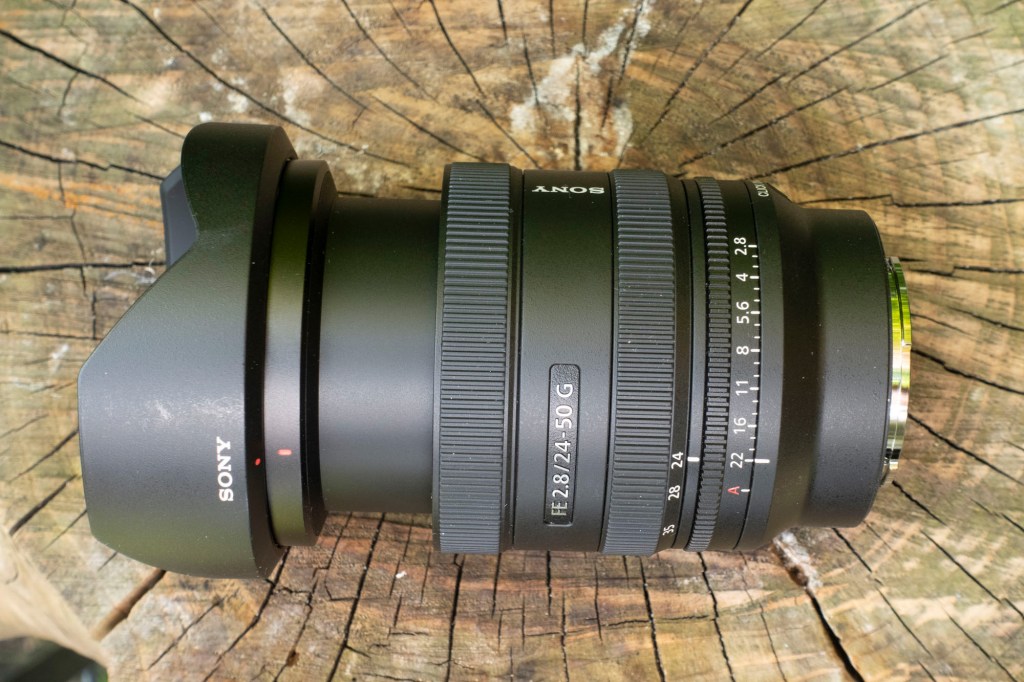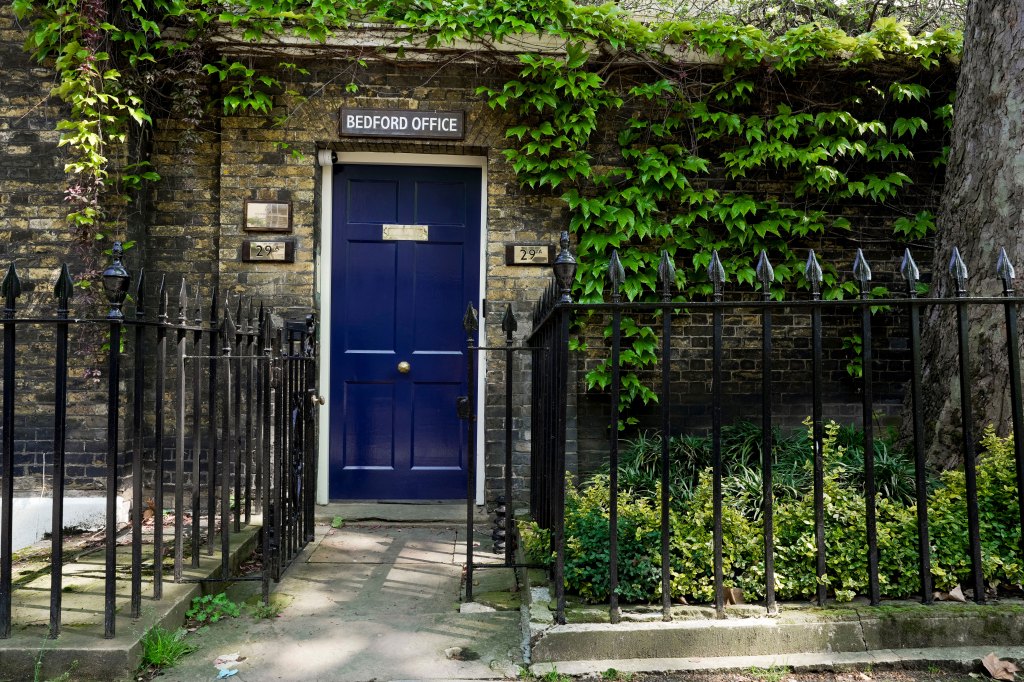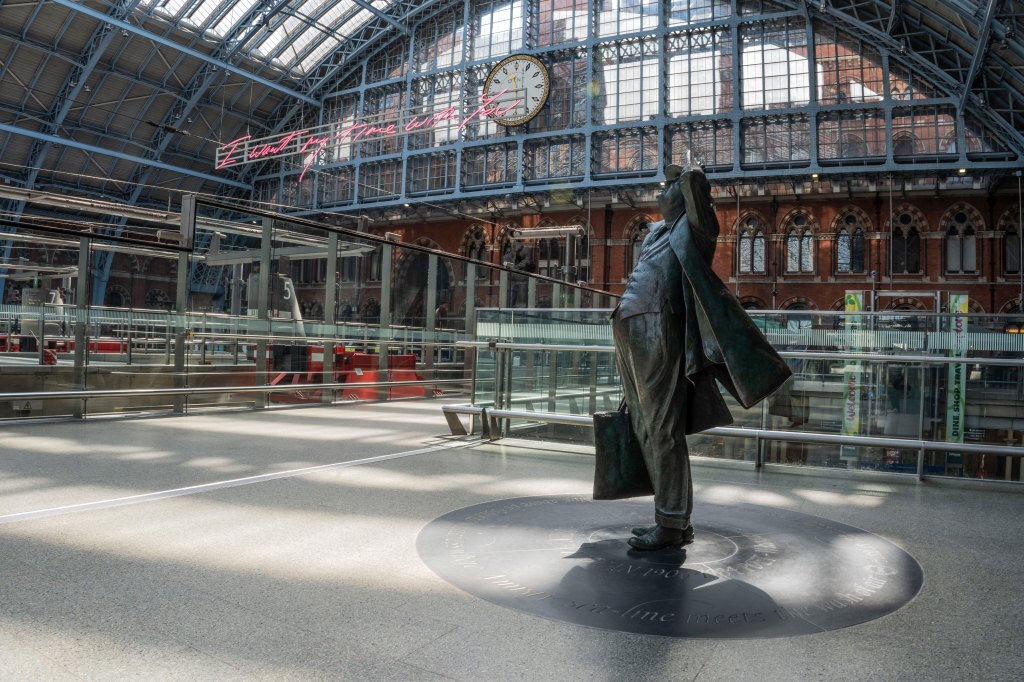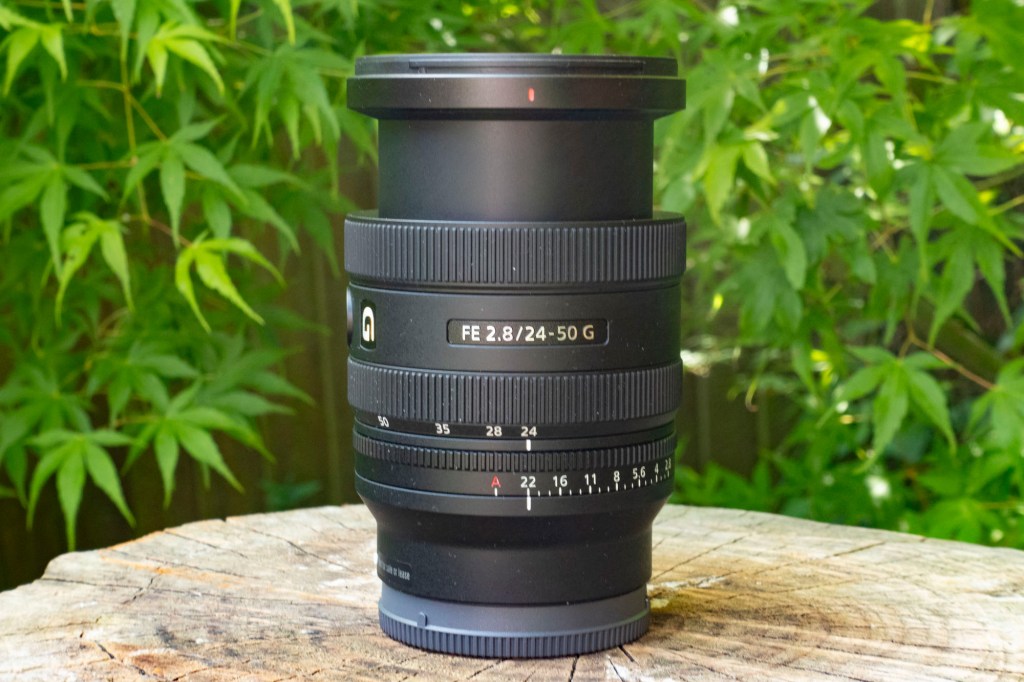Amateur Photographer verdict
A general purpose, lightweight zoom lens with good image quality. It’s compact build and useful focal length range makes it it deal for travel and video work.- Fast autofocus
- Small and lightweight
- Great for video work
- No image stabilisation
- High distortion at 24mm in uncorrected raw
As we have mentioned before, Sony’s FE mount lens range has reached the stage where the key needs of photographers have all been met, and the more niche lenses are starting to enter the playing field. One of these lenses is the Sony FE 24-50mm F2.8 G. It only has a very modest focal length, begging the question of who and what this lens is for. But will it make the cut and become one of the best Sony lenses to buy?
Sony FE 24-50mm F2.8 G – At a glance:
- $ 1,098 /£ 1,149
- Sony E-mount (full-frame)
- Aperture: f/2.8 – f22
- Minimum focus: 19-30cm
- 77mm filter thread
- 74.8mm diameter x 92.3g; 440g
- www.sony.co.uk
First up, the £1149 lens covers three classic focal lengths—24, 35, and 50mm. Although recent trends have been for wider focal lengths, 24mm is often considered a good wide angle for landscapes and documentary scenes. The 35mm focal length is a general-purpose lens, which is great for photojournalism. And, of course, the 50mm is the cliched ‘roughly the same as the central human field of view’ focal length; another great all-around option, particularly for people shots.
That gives us our first hint at who this lens is for; it’s a general-purpose zoom, weighted towards landscapes, documentaries and people. Not going to 70mm keeps the lens small and lighter than a 24-70mm would be, which is useful for travel.
It also covers arguably the most popular focal lengths we find on smartphone cameras, tapping into the needs of a new generation of photographers. And let’s not forget videographers, for whom this lens will cover the vast majority of shots they will need.
Sony FE 24-50mm F2.8 G – Features
While this lens is designed for a full-frame sensor, obviously it will work with Sony’s APS-C E-mount cameras too. Here, it provides the equivalent of a 36-70mm full-frame field of view. This is also true if you switch your full-frame camera to APS-C mode, which becomes extremely useful in video, as you can still shoot 4K footage at the 70mm equivalent setting.
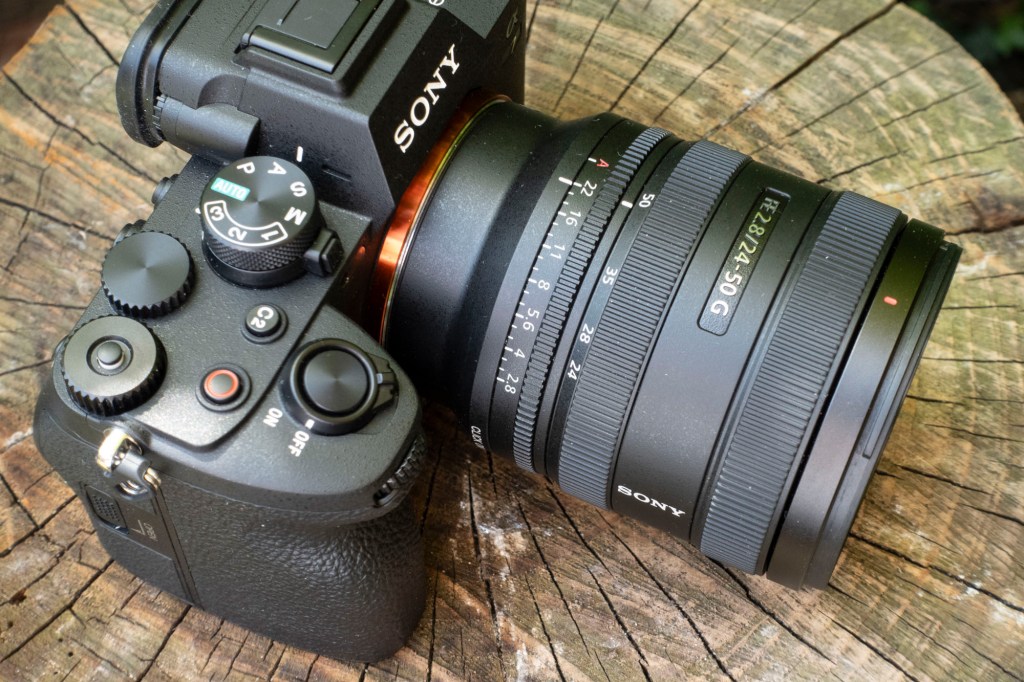
The 24-50mm lens does not have lens-based optical stabilisation; instead, it will rely on in-camera image stabilisation, which now features in the majority of Sony’s full-frame E-mount cameras. As a G-series lens, it is not expected to have the peak image quality of the firm’s G Master (GM) optics. But we have generally found that Sony’s G series lenses provide more than enough definition and resolution to meet the demands of the vast majority of photographers.
The lens is made up of an impressive array of 16 elements in 13 groups; there is a lot going on for such a compact design. There are two ED (Extra-low Dispersion) elements and four aspherical elements, all of which help to keep image sharpness high, while minimising curvilinear distortion, ghosting and flare. Meanwhile, the two linear motors are fast enough to keep the lens focused even when shooting stills or video at 120fps.
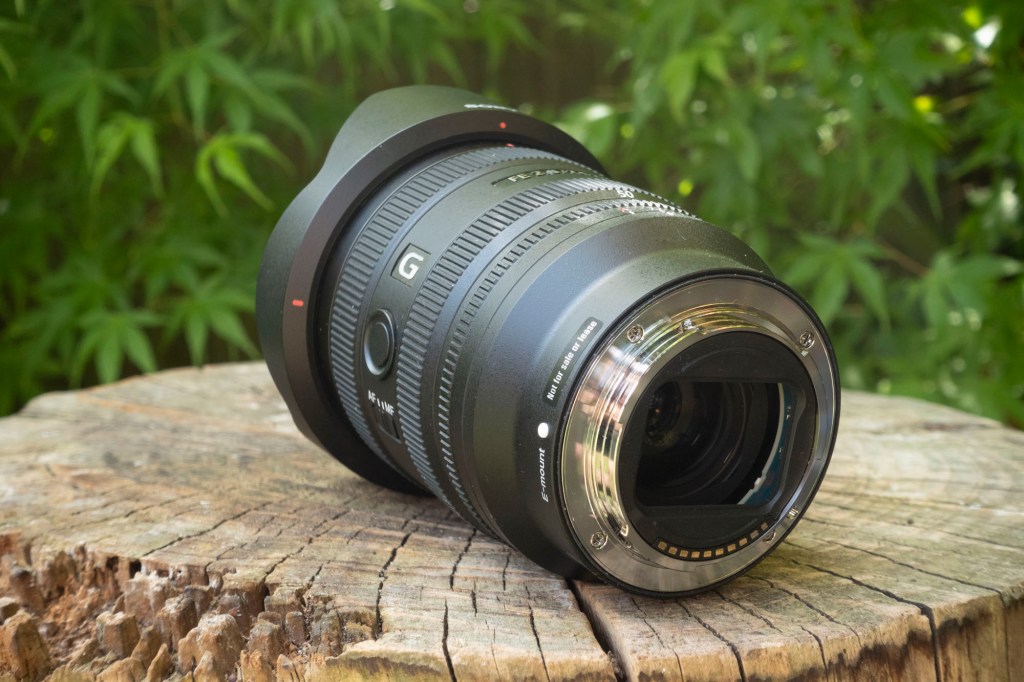
All of this is crammed into a lens that weighs 440g, measures 74.8mm long, and has a diameter of 92.3mm. Compare this to the 695g, 119.9mm length, and 87.8mm of the £1999 Sony FE 24-70mm F2.8 GM II lens, and you can see the savings in both portability and price for those who don’t need to zoom beyond 50mm.
In my mind, the lens is aimed squarely at the hybrid shooter who has to shoot photos and video. Sony themselves advertise that the lens has a minimal shift of balance when zooming from one end to the other, making it a great choice for use on a drone or gimbal, where it’s vital to keep a lens balanced. Gimbal use for video is perhaps another reason for the omission of optical stabilisation.
Sony FE 24-50mm F2.8 G – Build and Handling
In-hand the 24-50mm f/2.8 lens feels like every other lens in the Sony G series line-up. It has a solid construction, with an aperture ring that can be switched to clickless operation for smooth video exposure transitions.
An AF/MF switch allows photographers and videographers to quickly switch from auto to manual focus, enabling the use of the manual focusing ring, which is towards the front of the lens. As usual this is of the focus-by-wire type, so there are no hard stops. This used to be an issue when wanting to pull focus for video, but now, with onscreen touch focus, it is easy enough to focus smoothly from one point to another automatically.
The zoom ring is roughly in the centre of the barrel and has a reassuringly firm turn that won’t slip easily. It is also smooth enough to make smooth zooms when shooting video. The zoom feature itself isn’t internal; the lens extends by just shy of 20mm when at its widest 24mm focal length. As the Sony lens diagrams show, there isn’t as much going on at the front of the lens, and with the possibility of other elements shifting in reverse, the difference in balance is only marginal.
The only other feature of the lens that you can click, press, or turn is a custom button on the lens barrel. By default, this button temporarily holds the autofocus, but this can be changed to any number of items in the camera.
I should note at this point that I tested the lens with the Sony Alpha A7 IV and found it to pair really nicely in terms of size and weight. That said, this isn’t a pocketable walkaround solution like a Fujifilm X100VI or Sony RX1 might be. Even when paired with a Sony A7C series camera, it isn’t one to slide in and out of a pocket. But for a weekend city break, with a focus on photography (pun intended), it is a nice pairing to put in a shoulder bag.
Sony FE 24-50mm F2.8 G – Autofocus
I found that the linear motors in the lens lived up to expectations. Video transitions were smooth and precise, even when shooting at the maximum f/2.8 aperture. For photography, I shot a children’s birthday party, and the face and eye tracking did a good job with continuous focus of making sure that the children were in focus, no matter where they were running around.
The only time it failed was when a random child threw themselves and their face directly in front of the camera, with the lens taking a second to jump to the near minimum focus distance. Setting the Continuous Focusing response to its fastest setting helped this. Failing that, lifting my finger off the AF button and quickly back on caused an instant reset and snap into focus. The lens is as quick as you would expect from the current generation of Sony lenses.
For video, the lens performed brilliantly. Face detection locked in, and the lens stayed in focus. It might not be quite wide enough for handheld vlogging, but put the camera on a tripod and use the lens at 24mm, and you have a great lens for presenting to the camera. Then the 50mm setting serves as a nice focal length for close-up shots.
With Focus Breathing Correction turned off, there is a visible zooming effect on changing the focus distance. However, it isn’t too jarring unless you are moving through very extreme distances. With correction enabled on the A7 IV, there is a minimal crop in the frame, but the breathing is, to my eyes, perfectly corrected.
Sony FE 24-50mm F2.8 G – Performance
With a lens of this size, there are going to be compromises in lens design, but that is one of the huge advantages of shooting digital images. At 24mm, there is very significant curvilinear distortion in uncorrected raw files. However, you won’t see any barrel distortion through the viewfinder, as it is corrected almost perfectly in-camera.
In fact, the Curvilinear distortion correction option is greyed out in the menu, set to Auto and cannot be changed. So both JPEG files and video footage will always be automatically corrected. Raw images aren’t corrected, though, and therefore look significantly wider than the JPEG images. Still, you obviously do not need to change how you shoot, as you will see the corrected field of view when shooting, which is a proxy for your end goal when editing the raw images.
At 35mm, the barrel distortion is less significant but still noticeable when comparing raw and JPEG images. However, by 50mm, the distortion has almost completely corrected itself optically, and the difference between raw and JPEG images is minimal.
With 11 rounded aperture blades, the bokeh at f/2.8 looks nice; it is certainly capable of nicely blurring a background when shooting headshot portraits. There is a little stretch of those perfect circles towards the corners, but nothing that anyone but the most pixel-peeping photographer will have any issue with or even notice.
There are no real surprises regarding the lens’s sharpness. It delivers great performance in the centre throughout the focal length range, as we have come to expect from the Sony G lens series. At the largest f/2.8 aperture, there is a marginal loss in quality compared to the sharpest setting, mainly from a fractional drop in contrast. As you would expect, f/5.6-f/8 is the area of peak sharpness, with a nice bite to contrast. There’s a drop-off at f/11, but this really splitting hairs. At f/16, it is more noticeable that diffraction is kicking in, which is obvious by the weakest aperture, f/22.
Corners are a similar story. I’ve looked at the JPEG files, which crop the very edges as part of the distortion correction. The results show a softening across the aperture range and focal lengths compared to the centre sharpness. There is detail there, and some localised adjustments should add a little more bite to the detail. This is where the difference between a Sony G lens and a G Master lens comes into play. But overall, the corners look good without being excellent; they certainly don’t detract from the image.
Sony FE 24-50mm F2.8 G – Our Verdict
The Sony FE 24-50mm f/2.8 lens may seem like an odd focal length, but it certainly has a place for those who want a lightweight lens for travel and video work. It is perfect for the type of photos that you would take on your phone, and for those using it on their first full-frame mirrorless camera, it will provide an easy transition.
Curvilinear distortion is a compromise thanks to cramming everything into such a small lens barrel. However, the reality is that the in-camera and software correction means that this should never really be a problem in practical use. Image quality is good in the centre, even when shooting at f/2.8, but diffraction starts to kick in from f/11.
Where the lens wins lies in its versatility and functionality. The autofocus is good, which, combined with good image quality and compact build, make it a good all-around zoom lens for both photos and video. But it certainly isn’t for everybody.

Follow AP on Facebook, Twitter, Instagram, YouTube and TikTok.
Sony FE 24-50mm F2.8 G: Full Specifications
| Price: | $1098 / £1149 |
| Filter Diameter: | 67mm |
| Lens Elements: | 16 |
| Groups: | 13 |
| Diaphragm Blades: | 11 |
| Aperture: | f/2.8 – f22 |
| Minimum Focus: | 19-30cm |
| Length: | 92.3mm |
| Diameter: | 74.8mm |
| Weight: | 440g |
| Lens mount: | Sony E (full-frame) |
Related reading:

